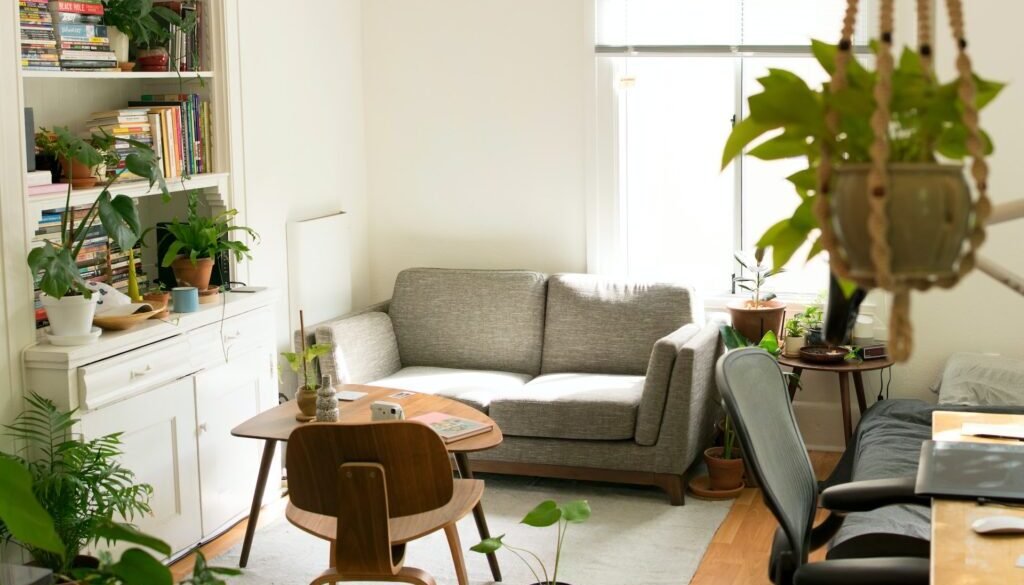Green Interior Design is a simple but effective step that will allow you to make your home as environmentally friendly as possible. Most people don’t really think about how their choice of blinds or curtains affects the environment. Blinds and curtains made from non-woven natural fibers such as bamboo are better for the environment than comparable window coverings made from man-made, chemical-laden fabrics. Window coverings that involve adhesives, such as Velcro, can be more harmful to the environment than other materials such as PVC. By switching to natural products, you can dramatically reduce your carbon footprint.
Your home is one of your most expensive, daily usage assets. As a homeowner, you want your home to work with you and your budget, while still being easy on the environment. You should be aware of Energy Star ratings and use low energy glazing in every way possible. An effective design concept is to minimize your energy consumption so you have more energy left over to do the things you enjoy, like watching TV or reading a book.
If you’re trying to reduce your home’s impact on the environment, consider the use of shade in your home. Shades are a great way to block the sun, and they help keep your home cooler on hot summer days. Choosing and installing energy efficient window shades is an easy way to start reducing your carbon footprint and improve your home’s air conditioning efficiency. In addition, replacing any outdated windows with new ones using energy efficient glazing will also help to reduce your home’s overall heat output, and improve its energy star rating.
Use products made from sustainable, renewable resources. Many products and processes that are part of the green lifestyle are considered “sustainable” because they take away resources from the earth that might otherwise be used in their production. For example, many car manufacturers now use metal made from recycled steel. Most home renovation companies will substitute plywood for lumber that comes from trees that are cut down for their logs. By using recycled products and building products that reuse resources, you can help to reduce your home’s impact on the environment.
Make sure that you set realistic goals for your home’s energy efficiency. Many people think they can buy an energy-star-rated blind and simply install it in all of their rooms. This isn’t always the best idea, however. By setting realistic goals regarding your home’s energy efficiency, you’ll be able to tell if your blind is actually doing its job. In addition, having an energy star labeled on your blind lets you know that your efforts are being recognized for the good they do, rather than simply a sticker that say something different. A real energy star home improvement product has a blue and white color, and often has small, clear labels that say how much electricity the product utilizes, how many hours of electricity it uses per year, and so forth.
You also want to choose green design products that are biodegradable or renewable. Some examples of these are paper towels and napkins, which can be printed with messages encouraging others to go green. These products are not only easy to produce, but they can be shipped all around the world, as well.
Once you’ve replaced all of your home’s non-biodegradable or renewable products with green ones, you need to take other steps to make your home more energy efficient. For example, windows should be kept closed when you are away, so as not to allow hot air to form on your house and cause your electricity bill to spike. Also, if you have insulation installed in your home, it should be properly covered so that it does not get worn away from heat or cold, and that it doesn’t allow cool air from the outside to enter inside. Properly covered windows and insulated walls and floors will make a big difference in your home’s energy efficiency.
Creating a green design lifestyle at home is a great way to reduce your carbon footprint, protect the environment, and boost your spirits. If you do a little research, you can come up with your own strategies. Start by making small changes to your current home decorating style, such as choosing environmentally friendly curtains, lamps, or throws. Once you start adding these eco-friendly touches, it won’t be long until you see an improvement in your electricity bill or for that matter your greenhouse gases. Even those who are not concerned about global warming should consider doing something to help the environment, given the fact that it’s one of our most precious resources. You will feel great knowing that your efforts are bearing fruit.




